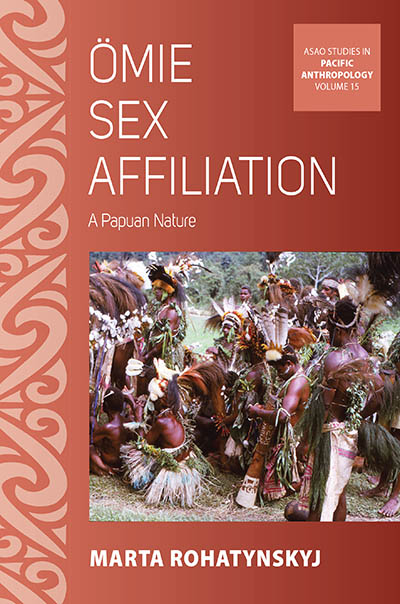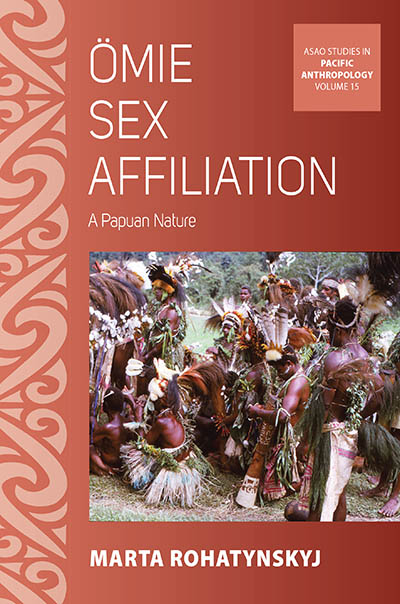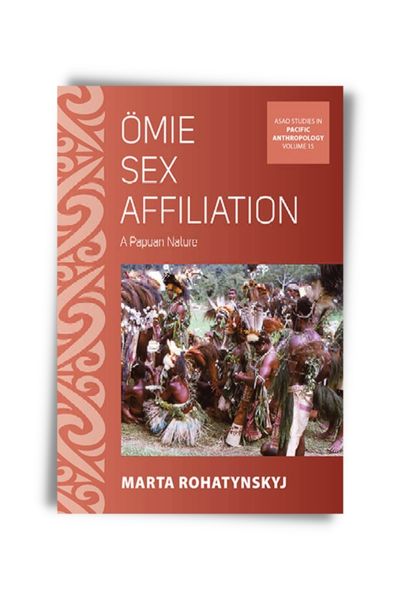
In this exclusive article, Marta Rohatynskyj, author of ӦMIE SEX AFFILIATION: A PAPUAN NATURE, reveals the conundrum she faced when she first studied the Ӧmie of Papua New Guinea.
My ethnographic encounter with the Ӧmie of Oro (Northern) Province of Papua New Guinea, many decades ago, placed me in a state of extreme reflexivity shock. The shock manifested itself in my muteness on the nature of sex/gender relations in the ethnographic region to which my findings directly spoke. My inability to contribute to an intense regional discussion stung that much more as the question of sex/gender relations was the predominant preoccupation of feminist Melanesianists of the day.
The condition developed upon the realization that reflexivity, a critical examination of the cultural and disciplinary assumptions guiding analyses of findings, could not provide me respite from the ethnographic quandary in which I found myself. The shock was extreme both in its symptoms and in the elements of my data I needed to relativize. My understanding of the Ӧmie practice of sex affiliation was based on a view of men and women as largely independent of each other in the reproduction of same-sex children with males producing malechildren,initially with theassistance of women, and women having the ability to produce female children without sexual intercourse with males. Most generally, I suspected the culprit in my inability to relate my findings to that of colleagues working in the region was descent theory, increasingly discredited in the ethnographic region. For Ӧmie groups, identity and rights to land were determined by adherence to named totemic birds, animals, trees, and geographical features which were claimed through a variety of social mechanisms and not necessarily through rules of descent. But it was not just that I could not envision Ӧmie social and political organization as even a faint reflection of the classic West African lineage systems, whether patrilineal or matrilineal. The problem lay with a more fundamental obstacle for which descent theory functioned as a Trojan horse. Both our science and our Western folk models dictate that human reproduction is a cooperative process with both male and female contributing to the reproduction of both male and female children. I knew this to be true as much as I knew that sex-specific reproduction was the way the Ӧmie peopled their world placing men and women in a competitive instead of a cooperative relationship to each other in their reproduction of selves.

The severity of my quandary lay in the absolute failure of reflexivity to provide a path out of the conundrum. The disjuncture between the Ӧmie practice of sex affiliation as understood by me and our scientific and folk assumptions about the processes of human reproduction was absolute and unbreachable at the time. Imagine, a graduate student in her twenties embarking on her first ethnographic field research, her mind filled with the vibrancy of the writings of the great minds of the discipline. However, at the end of a period of intensive research, she finds herself totally transfixed by the experience but unable to find a language that would articulate her new knowledge in terms acceptable to the discipline. After painstakingly reviewing my material time and again, I remember determining to myself that the only possible solution to their seeming opaqueness lay in a critique of the most basic orthodoxies of the discipline. I was sure that my inability to understand the practice of Ӧmie sex affiliation lay with ‘us’ and not the Ӧmie themselves. ‘Wait,’ I thought, ‘until a break in the impasse between the Ӧmie understanding of human reproduction and our scientific one appears.’
This break evolved over several decades. The work was done for me by a host of anthropologists and non-anthropologists. The reflexive turn advanced the critique of ethnography as a Western cultural product. Feminist anthropologists exposed deeply seeded patriarchal precepts in the classic distinctions between culture/nature and the public and domestic domains in which most approaches to sex/gender had previously been framed. And finally, the ontological turn emboldened anthropologists to accept others’ realities as worthy of serious attention. Thanks to this cataclysmic transformation, I was able to leave behind the muteness initially forced upon me. The distinctness of my recent ethnography of the Ӧmie lies in its presentation of human reproduction as sex-specific in Ӧmie-like societies in the region. These societies comprised a major focus of feminist attention some decades ago, in that they were characterized by extreme sexual polarity, complex male maturity rites, notions of sexually polluting substances and at times, extreme forms of male dominance. I offer an economical explanation of such a cultural configuration as due not to psychological factors, ritual preoccupations, or incipient warfare, but to a radically different conceptualization of the ‘facts of life’ and thus of the nature of human beings and the pervasive difference between male and female as sentient beings. Assuming a western defined human nature for the subjects of our research amid these realities, only bifurcates our analysis into what makes sense in terms of our model and our nature, and the unaccountable realm of ritual beliefs, practices and other exotica ascribed to theirs.
The Ӧmie practice of sex affiliation, the boy belonging to the father’s group by taking his plant emblem and the girl belonging to the mother’s group by taking her plant emblem, highlights the degree to which in these types of societies male and female are recognized as radically different types of being belonging to different social groups and thus capable of self-reproduction. Sex affiliation was initially described and named by a respected, if also theoretically somewhat unorthodox, government anthropologist some ninety years ago. Accounts of the practice are exceedingly rare in Melanesian ethnography. Aside from the one case identified amongst a group who are part of the same language family as the Ӧmie, they appear insubstantial, wafting in and out of various patrol reports and testimonials by pioneering ethnographers. These accounts co-exist with those of several other strange practices, or what appeared to the discipline as sex/gender anomalies, documented, at times haphazardly, in the last century or so of Melanesian research. The region became known for exotic beliefs and practices such as claims of male parthenogenesis, intergenerational sexual orgies, ritualized homosexuality, sexual antagonism and even the absolute denial of paternity. Clearly, Papua New Guinean ethnography has posed a challenge to not only the ethnographers’ normative beliefs about sex/gender and the facts of life in their home societies but also to the flexibility of disciplinary models to analyze, explain and compare sets of data with an existing ethnographic corpus.
I have presented my current facility in providing a succinct explanation of challenging ethnographic facts as a product of taking advantage of specific transformations the discipline has undergone, in sum, as a product of its history in the world. And these transformations are embedded in global liberation movements, that all of us, whether anthropologist or not, have experienced variably in degree and in manner. Contributing directly to my capacity to analyse seemingly obtuse Melanesian data is the global feminist movement and the movement of Indigenous peoples to claim their cultural sovereignty.
Be that as it may, the process I have described may be viewed from another perspective. My economical explanation of the puzzle of Ӧmie-like ethnographic instances may be cast in the classic terms of the history of science; the interplay of paradigms and anomalous cases driving more accurate accounts of specific realities. Reports of cases of sex affiliation are indeed rare in the Melanesian corpus and poorly integrated in the conceptual structures of the discipline. Unable to fit into our understanding of a human reproductive nature, which underlies ethnography, and not just in the concepts of descent and the family, it has languished in obscurity until the time was right to mine its potential. Indeed, in giving up our assumption of bi-sexual reproduction of both children of both sexes, we may have opened the possibility of understanding more accurately some of the puzzles that have haunted Melanesian ethnography. Only, such a view of the significance of sex affiliation within Melanesian studies requires the acceptance of a science of humanity liberated from its major scientific assumption of the universal nature of human reproduction.
Marta Rohatynskyj taught for over twenty years in the Department of Sociology and Anthropology at the University of Guelph, in Guelph, Ontario, Canada, and published on the topics of gender and development both in the Papua New Guinean setting as well as elsewhere. Her publications include the co-edited volume with Sjoerd Jaarsma Ethnographic Artifacts: Challenges to a Reflexive Anthropology (University of Hawaii Press, 2000).

ӦMIE SEX AFFILIATION: A Papuan Nature
274pp, 14 illus.; hardback & ebook
Published in our ASAO Studies in Pacific Anthropology series
For the latest news on our books and journals please sign up for our email newsletters.
